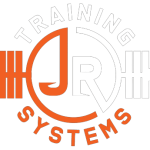the bustling world of fitness, where personal training in Langley and strength training routines are gaining momentum, a common mantra often heard echoing through gyms is “go hard or go home.” While the intention behind pushing to the limits—training to failure—can be noble, it might actually be setting you up for a stumble rather than a leap towards your fitness goals. Let’s unpack why always training to failure might not be the golden ticket it’s often made out to be, backed by relevant data, studies, and statistics.
1. Understanding the Science of Strength Training
Strength training in Langley has seen an uptick in enthusiasts eager to transform their physique, improve health, and boost their overall quality of life. At its core, strength training is about progressively overloading the muscles to foster growth, strength, and endurance. However, the concept of training to failure—performing an exercise until you can’t complete another rep with good form—has been a topic of debate among experts.
Research indicates that while training to failure can be an effective tool for muscle growth, it’s not necessary for making significant gains. A study published in the Journal of Strength and Conditioning Research found that participants who trained to failure saw no significant difference in muscle size or strength compared to those who didn’t push to the absolute limit. This suggests that the key to success lies in consistent, progressive overload, not just the intensity of a single session.
2. The Risk of Injury and Overtraining
One of the most compelling arguments against always training to failure comes from the increased risk of injury. When muscles are fatigued to their breaking point, the likelihood of compromising form and technique skyrockets, setting the stage for potential injuries. Personal training professionals in Langley emphasize the importance of maintaining proper form over pushing to complete exhaustion to safeguard against unnecessary strains or sprains.
Furthermore, the road to recovery gets longer the harder you push. Overtraining can lead to a state of chronic fatigue, decreased performance, and even a weakened immune system, as highlighted by a study in the Sports Medicine journal. The delicate balance of training, recovery, and rest is crucial for long-term progress and health.
3. Balancing Intensity for Optimal Gains
So, how do you strike the perfect balance in your strength training regime? The answer lies in strategic planning and listening to your body. Integrating periods of high intensity with adequate recovery time ensures that you’re building strength without overtaxing your system. Personal trainers in Langley recommend incorporating a mix of high-intensity sessions and moderate, non-failure workouts to optimize strength gains and minimize the risk of burnout or injury.
For those seeking to maximize their strength training outcomes, it’s essential to focus on the quality of each rep, set realistic goals, and embrace a holistic approach that includes nutrition, rest, and recovery. Remember, strength training is a marathon, not a sprint; the goal is sustainable progress, not instant gratification.
Conclusion
While pushing your limits can be a part of a well-rounded strength training strategy, making it the cornerstone of your routine is a recipe for setbacks. By understanding the science behind muscle growth, acknowledging the risks of overtraining, and balancing your workout intensity, you can achieve your fitness goals without compromising your health or well-being. Whether you’re working with a personal trainer in Langley or navigating your strength training journey solo, remember that success lies in the balance, not just the burn.
In the ever-evolving landscape of fitness and strength training, the path to achieving your goals is multifaceted. Training to failure has its place, but it should be used judiciously and not as a one-size-fits-all approach. By adopting a more nuanced, informed strategy, you’re not setting yourself up for failure but paving the way for lasting success and resilience.

